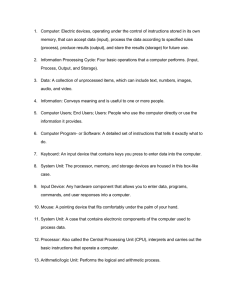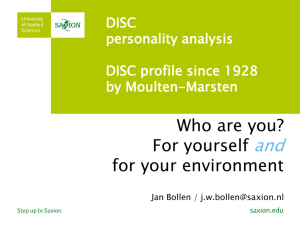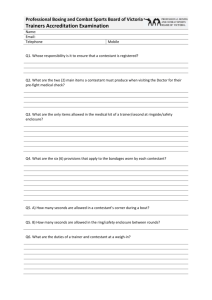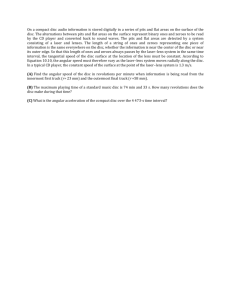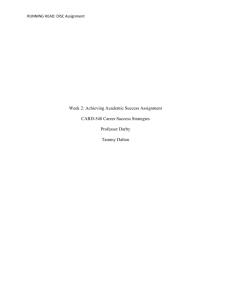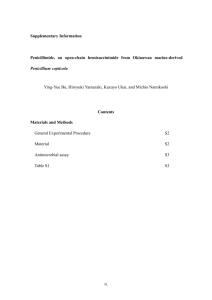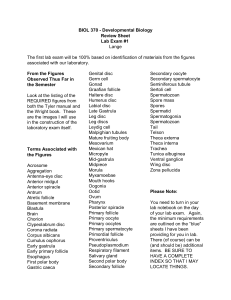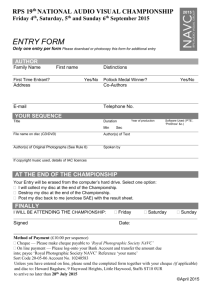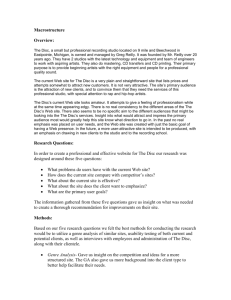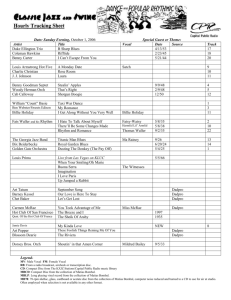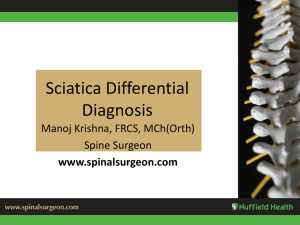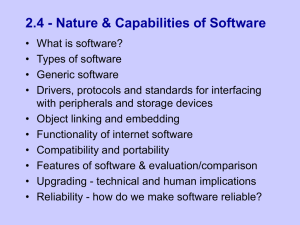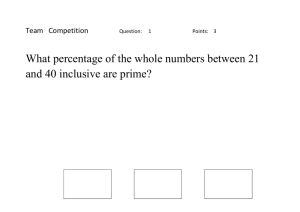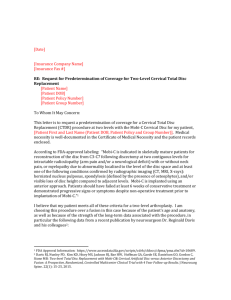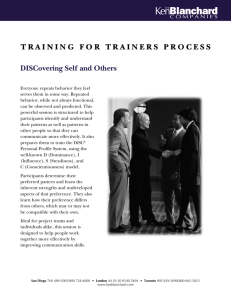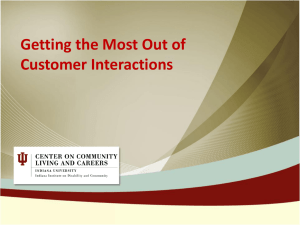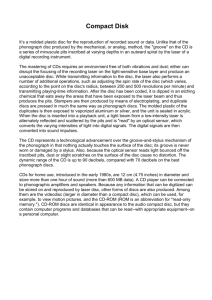Presentation
advertisement
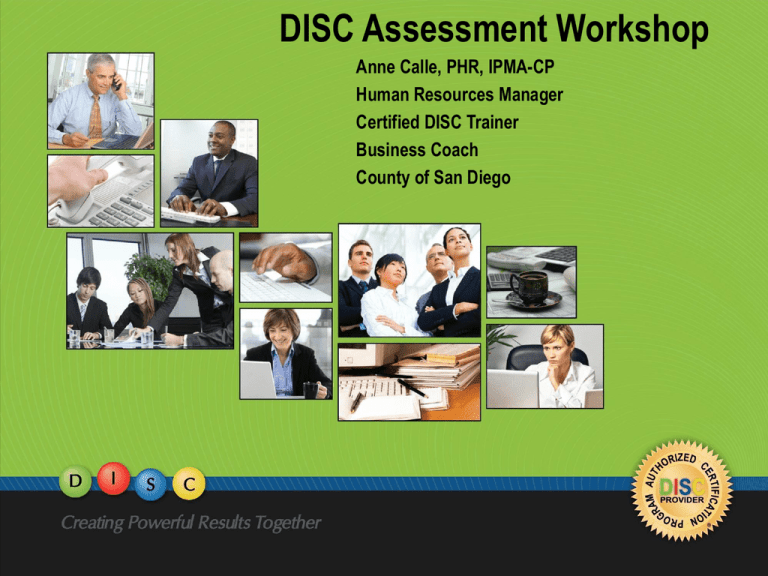
DISC Assessment Workshop Anne Calle, PHR, IPMA-CP Human Resources Manager Certified DISC Trainer Business Coach County of San Diego The DISC Model DISC is the four-quadrant behavioral model based on the work of William Moulton Marston Ph.D. in 1920, to examine the behavior of individuals in their environment or within a specific situation. 2 DISC Benefits • Understand own communication strengths and challenges • Learn to appreciate the differences and strengths of others • Enhance teamwork and reduce team conflict • Greatly improve business relationships Dominance To the point, decisive, and bottom-line oriented. Tends to be independent and results-driven. Strong-willed and enjoys challenges, taking action, and immediate results relating to control, power and assertiveness. Interactive Fast-paced. Creative, optimistic and outgoing. Tends to think outside-of-the-box and takes risks. Highly social and influential. Enjoys being involved, leading discussions, entertaining and energizing others. Steadiness Empathetic and Cooperative. Are team players, supportive, good listeners, and helpful to others. Avoids conflict. Prefers being behind the scene and working in consistent ways. Prefers steadiness as opposed to change. Compliance Concerned, Cautious and Correct. Wants facts and data. Focused on details and quality. Plans ahead, constantly checks for accuracy, and wants to know "how" and "why". DISC Report 8 Your Adaptive (Graph I) & Your Natural (Graph II) 2 9 Your Graph I Word Sketch 2 1 10 It’s time to play…. What’s YOUR Style? 11 Question 1 for D contestant During a meeting I prefer to … A) Share my successes with the group and provide ways for others to improve. B) Share all of my ideas to make sure they are heard and considered for innovative improvements. C) Listen to conversations. Make a contribution if there is a good time to do so. D) Arrive on time, make mental note of the details of the discussion, correct inaccuracies and make solid contributions including process. 12 Question 2 for S Contestant When I have to have a discussion with an employee about an performance issue, I…. A) Make sure I start with a light discussion and point out positive contributions before addressing issue B) Provide a list of and detailed description of the issue and communicate the expected behavior change and consequences of not meeting C) State the issue and expected change D) Collaborate in a discussion and come up with a agreed upon plan for correcting action 13 Question 3 for I contestant I have a idea for a process change that I need to sell to my “C” superior. I’m going to… A) Present the idea at the meeting and sell the vision/outcome B) Present a detailed plan of the process and steps to achieve the outcome C) Present the vision and the benefits for the superior D) Present the plan and include how the outcome will affect the team members 14 Question 4 for C contestant I am putting together a quarterly report to present to my team consisting primarily of “I” styles. I will… A) Make the report short and to the point, bulleting the critical highlights B) Complete the report with charts and graphs detailing the each of the accomplishments, initiatives, etc. C) Make the report short with colorful graphics to illustrate the points that highlight innovation and moving to the future D) Complete the report with colors and details focusing on individual accomplishments 15 Visiting Four Countries • Before visiting other countries, learn basic words & actions. – What are some positive descriptors about each style? • Your native language (or style) remains your most familiar language. ominant Judge nteractive Trainer teady Counselor ompliant Scientist 16 Adapting Your Style Page 30 17 To effectively communicate, we must realize that we are all different in the way we perceive the world and use this understanding as a guide to our communication with others. - Tony Robbins



